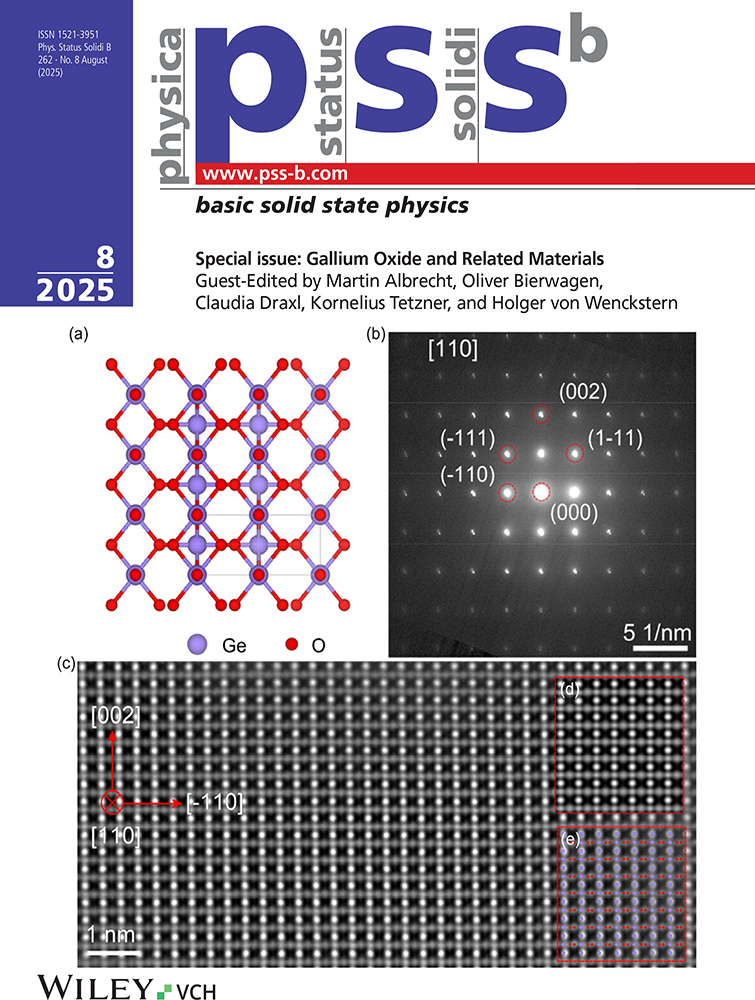Molecular Model for the Second-Order Magnetic Field Effect on the 4E(G) Level of Mn2+ in ZnS
Abstract
A covalent model is presented for the contribution of the orbital part in μBL · H of the Zeeman Hamiltonian to the anisotropy of the magnetic field effect on the 4E(G) level at lower energy of Mn2+ in ZnS. First, the coefficients dgA1 and dgE which describe the influence of μBL · H are given in terms of the matrix elements of a second-order perturbation scheme involving the spin–orbit (SO) interaction and the orbital operator in L · H. Second, a molecular model involving the molecular SO interaction is elaborated. It is shown that the theoretical values dgA1 th = 0.025 cm—1 and dgE th = 0.040 cm—1 as given by the covalent model are in good agreement with the experimental values dgA1 exp = 0.02 cm—1 and dgE exp = 0.04 cm—1. Third, the theoretical values given by the covalent model are compared to the values given by the crystal field (CF) model. Finally, the influence of the Jahn-Teller effect on dgE is briefly analyzed.




